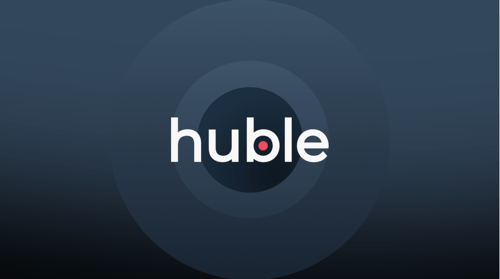Want to build a lead-generating website but need inspiration? Look no further. In this blog, Matthew Creswick, Global Marketing Director at Huble Digital, takes a look at a few of the top websites optimised for lead generation.
Developing a lead-generating website for your business means focusing on the most basic components – the stuff that most would consider less glamorous but are essential to attracting, retaining and converting website visitors.
In my last blog, I discussed these components, covering things like calls-to-action, content, forms, design, customer testimonials, design and other features which help to increase visitor engagement and your website’s lead generation activity.
In this blog, I’ll be looking at three examples of websites optimised for lead generation and how they leverage the components I outlined to attract, retain and convert website visitors.
Databox
First example of a lead-generating website: Databox.
One of the best ways to engage with website visitors the moment they arrive on your website is to include a big and bold call-to-action and a short explanation of your product or service.
The moment a visitor arrives on Databox’s website, they are greeted by a large banner CTA and a few lines of text explaining what the product is, what it can do, and how to get started. If website visitors want to try the product (which is free forever, another great addition) they just need to enter their email and click the ‘get started’ button.
On the other hand, if a website visitor is interested in finding out more about the product, all the information they need is offered on the homepage – they just need to scroll down. Databox also has a ‘business software reviews’ section which includes reviews from leading software review platforms and customer quotes.
This kind of website layout and content, particularly for businesses that sell a product or service directly, can help to appeal to and convert website visitors who are ready to try or buy a product.
Databox’s website is focused wholly on lead generation. Their product is front and centre, free for people to try and the form website visitors need to fill out is minimal. Databox has removed all the friction from the process and make it easy for website visitors to find out more.
HubSpot
Similar to Databox, HubSpot’s homepage features a really cool banner CTA with large text and beautiful imagery. Along with the image, there’s a short and concise explanation of the HubSpot product: “marketing, sales and service software that helps your business grow without compromise” and a large CTA button labelled ‘Get HubSpot free’.
There are no distractions. If a website visitor is interested in acquiring HubSpot they can easily do so the moment they arrive on the HubSpot website. If a website visitor wants to learn more about the HubSpot product and what is included in each package, they can scroll down the homepage to find out more. It’s that simple.
Below the packages are a bunch of statistics highlighting just how large the HubSpot platform and community is, and following that is the number of customers growing their businesses using HubSpot (and a few client logos to the right).
Once again, HubSpot (just like Databox) has removed the friction from the process and provided website visitors with the information they need right away and in a concise format. In addition to providing that information, HubSpot takes advantage of brand logos and statistics to show website visitors just how large and widespread the platform is.
Every element on the HubSpot homepage is designed to get website visitors to take action and convert.
Evernote
Though more inclined to individual users than businesses, Evernote is another example of a lead-generating website.
Just like Databox and HubSpot, it features a large banner CTA, which includes a header and a short explanation of the product and how it can help.
If website visitors want to find out more about Evernote, they can scroll through the homepage to find out more. The homepage is split into segments, each segment dedicated to a specific Evernote package: Basic, Premium and Business. Each Evernote package is briefly discussed on the homepage and includes a link for users who wish to find out more.
The website also has brand logos for social proof, showing website visitors just who uses the product. It also has another sign up CTA at the bottom of the web page, so once website visitors have scrolled through and read the content on the page and are ready to sign up, they can easily do so at the bottom.
In essence, Evernote’s website is minimalistic, simple, smooth. It does away with distractions by making good use of white space, has no excessive colours, builds website visitor trust and focuses on the basics that drive lead generation: compelling and prominent CTAs.
These are just a few examples, but there are a number of websites taking advantage of banner CTAs, content, reviews, customer quotes, testimonials, simple design and navigation to improve the user experience and focus on converting website visitors into leads.
While not every person who arrives on a business’ website will be ready to make a purchase, particularly in B2B, it still makes good sense to optimise it for lead generation regardless. Now and again, visitors who want to try the product or service (or perhaps even buy it) will arrive on the page and if it’s difficult for them to register their interest and find out more, businesses may lose those visitors.









-3.png?width=500&height=320&name=Matt%20-%20imagery%20bank%20(8)-3.png)

